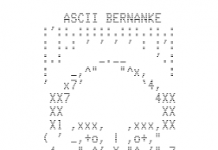Bitcoin Cash, the world’s fourth-largest cryptocurrency by market cap, is preparing for a hard fork on May 15.
The cryptocurrency famously launched with a hard fork in August 2017, when BCH split from the original bitcoin (BTC) chain. Now, BCH is using the same strategy to enhance the real-world usefulness of its cryptocurrency.
The May 15 hard fork is known as Bitcoin ABC. It quadruples the block size from 8MB to 32MB.
“Legacy” bitcoin (BTC), meanwhile, continues to have a block size of 1MB. BTC has maintained the 1MB block size since launching in 2009 and has experienced significant scaling issues as a result.
Today, BTC can only process approximately seven transactions per second. Credit card networks like VISA and MasterCard, meanwhile, can process over 50,000 transactions per second. BTC has proposed a centralized solution called the Lightning Network that runs outside the original BTC blockchain, while BCH developers emphasize larger block size as an on-chain scaling solution.
Bitcoin Cash was founded on the belief that larger block size will lead to greater transactional capacity. We’ve already seen that belief in action as BCH continues to have lower fees and higher transactional capacity than BTC.
This latest hard fork was first proposed when seven Bitcoin Cash development teams met in London in November 2017 to discuss the direction of the cryptocurrency.
In addition to a block size of 32MB, Bitcoin Cash will reduce block intervals to 2.5 minutes, giving the blockchain speeds similar to Litecoin.
Plus, the hard fork could also potentially activate dormant bitcoin code that would allow the BCH network to offer features similar to ERC20 tokens on the Ethereum network – including allowing users to launch ICOs.
The price of Bitcoin Cash, meanwhile, has surged 20% in the last week. The price of BCH has doubled since the beginning of April.
Bitcoin Cash Hard Fork Changes and Upgrades
The main upgrades in this latest hard fork include:
- Block size will be raised to 32MB, which is the largest possible block size available without changing peer-to-peer protocols
- The hard fork will re-enable the existing opcodes that were disabled earlier (these opcodes are the building blocks for some of the more advanced smart contracts)
- The upper turn size will be increased to 220 bytes from 40 bytes, allowing users to add more data on the upper turn for archiving on the blockchain (this could lead to the launch of “colored coins”, allowing you to track other assets that aren’t validated by miners)
- The possibility of timestamping data (this is also a result of increasing the upper turn size); this would allow users to hash a document and add it to the blockchain in order to prove existence of the document
All Bitcoin Cash node operators are encouraged to adopt version 0.17.0 prior to the May 15 hard fork.
The next Bitcoin Cash hard fork, meanwhile, is scheduled to take place in November 2018.


















